Anti-Trump, but not fully for Biden: Will Gen Z vote?
- Oops!Something went wrong.Please try again later.
- Oops!Something went wrong.Please try again later.
When Bernie Sanders — political darling of Generation Z — ended his presidential candidacy, Joe Biden spoke to his supporters: “I see you, I hear you, and I understand the urgency of what it is we have to get done in this country.”
Roughly three weeks from the election, a POLITICO/Morning Consult poll and interviews with two dozen youth voting experts and grassroots organizers suggest he’s had only mixed success with that message. The youngest citizens are eager to make a difference, driven by strong anti-Trump sentiment and the tumult of 2020. But they’re not fully sold on a Biden-led Democratic Party and still have concerns about voting.
The poll surveyed 1,000 eligible Gen Z voters, people between 18 and 23 years old, and found that they were twice as likely to vote for Biden as President Donald Trump: 51 percent to 25 percent. Meanwhile, registered voters of all ages had just a 6-point preference for Biden. Two-thirds of Gen Zers disapprove of the job Trump is doing in office, with many pointing to the Black Lives Matter protests and the pandemic as reasons why they were more likely to vote for Biden.
But Biden isn't inspiring much loyalty: 45 percent of Gen Zers supporting him said they were mainly voting against Trump, while only 26 percent of registered voters said the same. Slightly more Gen Z respondents view Biden unfavorably than favorably. It’s a tilt of 3 percentage points, but young organizers at local nonprofits and campuses across the country said the sentiment rings true. They’ve often heard distrust of the former vice president and the Democratic Party establishment on the ground.
“In asking people to vote, I’ve had to affirm that it doesn’t mean you have to fully accept everything Biden says beyond the election,” said Yazmin Sagastume, a 19-year-old who works with the community organization AZ PODER. “I’m telling people not to take this election as the final push. I just know that this is going to happen, and then we’re going to have to keep pushing.”
Gen Zers — politically liberal, diverse and incredibly active online — make up 10 percent of the electorate this year, but only 4 percent of likely voters, according to Morning Consult. Greater than expected participation of young voters could alter the outcome of the races for the White House and Congress. Research shows that votes from Gen Z and younger millennials could make all the difference in swing states.
For Biden and his fellow Democrats, there is reason for optimism. Youth-focused groups like Rock the Vote and NextGen America saw record-breaking engagement on National Voter Registration Day, and tech companies like Snapchat are registering young people in droves. Registration among 18- to 24-year-olds is actually up in at least 20 states since the last presidential election.
But the POLITICO/Morning Consult poll and other evidence suggests it’s still unclear if the Democratic Party will be able to convert Gen Z’s energy into actual votes and long-term loyalty, especially as organizing is hindered during a pandemic and as first-timers deal with a confusing voting process. Youth turnout has fallen short of high hopes in the past, with the exception of 2018, when voting rates rose across the board.
The poll found that just under half of Gen Zers were “absolutely certain” they’d vote. There are further signs of disaffection: One-third of Gen Zers agreed with the statement that their vote won’t have an impact, and one-fourth agreed that they didn’t like either presidential candidate enough to vote.
Young organizers like Victoria Sandoval insist that it’s not an apathy problem. The current reality for many Gen Zers includes but is not limited to: Inheriting a cratered economy that was just recently thriving. Working on the frontlines in low-paid, but essential jobs. Dealing with deteriorating mental health and social isolation during what’s supposed to be the “best years of your life.” Worrying about parents and grandparents. Leading ongoing protests for racial and climate justice. Grappling with the precoronavirus trauma of school shootings, a post-9/11 world and income inequality.
It’s impossible not to care, said Sandoval, who works in Laredo as an organizer for MOVE Texas, but many Gen Zers want to be wooed on their own terms.
“A lot of politicians talk at us, rather than speak to us with compassion and respect,” Sandoval said. “We’re going to be around a lot longer than the people running the country, they need to prioritize our asks.”
GEN Z ON THE SCENE
The first political memories for many Gen Zers revolve around Trump’s election. The first transfer of presidential power they witnessed was between the country’s only Black president and a man who has since altered the Republican Party in his image. They saw the rise of the Women’s March on Washington and the resurgence of Black Lives Matter. Inequality became a national talking point in Gen Z’s most formative years.
Distrust of both parties is a salient Gen Z characteristic. While there are pockets of pro-Trump and GOP support among this generation, groups of disaffected young conservatives, like gen z gop, have popped up. It’s too early to say with certainty how the views of this generation will evolve, but according to the Pew Research Center, young Republicans join their peers in having more liberal views on race, climate change and the activist role of government. Barely half of Gen Z identify as non-Hispanic white, making it the most racially and ethnically diverse generation yet.
“We grew up in a different information space, even from millennials,” said Sarah Batson, a sophomore at the University of Texas at Austin and a fellow with the Campus Vote Project. “And what’s happening right now is the major crisis of our lives. We are being kind of created through this process.”
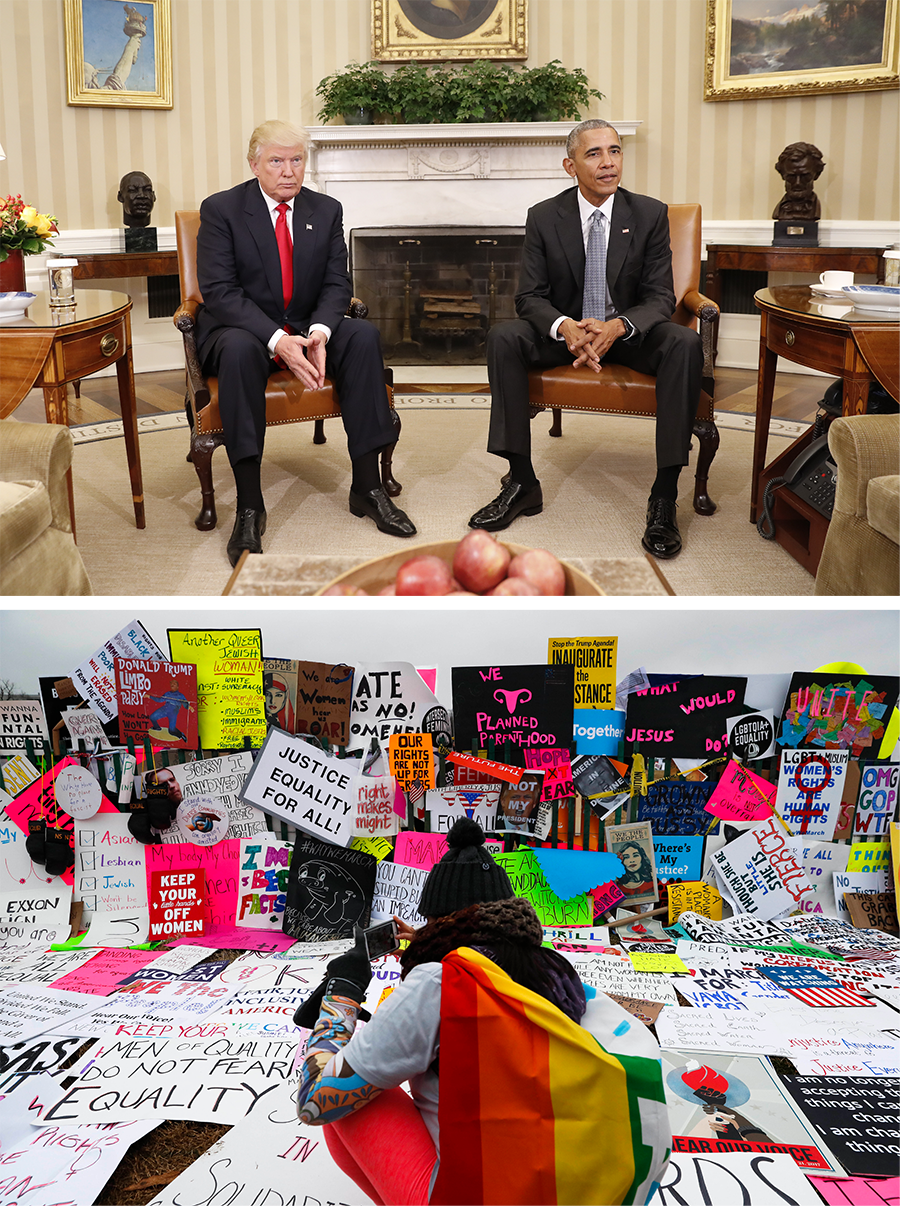
That doesn’t mean the Democratic Party will be the automatic political home for young people. In the POLITICO/Morning Consult poll, more members of Gen Z rejected both parties to identify as independent at a whopping 42 percent, with 39 percent identifying as Democrats and 20 percent as Republicans. By contrast, only 24 percent of registered voters identify as independent, with 40 percent identifying as Democrats and 36 percent as Republicans.
Democrats have tried to close the dreaded “enthusiasm gap” since progressive Sens. Elizabeth Warren and Sanders conceded the Democratic primaries to Biden. Washington College political science professor Melissa Deckman, who’s writing a book about Gen Z, said the national party probably feels that it’s in a difficult position, embracing a centrist nominee while much of its emerging energy is on the left.
“If you want to get Gen Z more jazzed, you need to go further to the left,” Deckman said. “There’s a lot of impatience among young voters. They recognize nothing will change with Trump in the White House and if Republicans control the Senate. But the party banner of moderate change is not enough to hold them.”
But Lubna Sebastian, the 23-year-old national director of Students for Biden, maintains that the campaign is in good standing with young people: “We've made sure that they're welcome.”
She said Biden has called himself a “transitional” candidate and is counting on young people to help inform that transition through policy, organizing and messaging. Gen Zers have responded well to Biden’s proposals to address climate change, student debt and minimum wage, she added, and they will “absolutely be a part of” shaping the country’s direction even after November.
It may be an uneasy fit. Members of Gen Z have become increasingly fed up with the status quo. Like older generations, they rank voting as the most effective way to create change — but they’re not as firmly behind voting as older generations are (45 percent said it was “very effective” compared with 62 percent of registered voters).
And Gen Z is more likely to consider protesting fruitful. While 44 percent of registered voters said protesting was a very or somewhat effective technique, that jumped to 56 percent for Gen Z respondents. This summer, after the police shooting of George Floyd in Minneapolis, young people were on the front lines of protests or supporting the marches from home. According to youth voting advocates, the Black Lives Matter movement was pivotal in driving up engagement around voting and the election in their communities — both for local races, where young people have more options, and the national race.
The uprising led to a new wave of political consumption and activism online. TikTok, the Gen Z entertainment app of choice, has become increasingly political even though it doesn’t allow campaign ads. Gen Zers get most of their election news on YouTube, Instagram and Facebook, according to the POLITICO/Morning Consult poll.
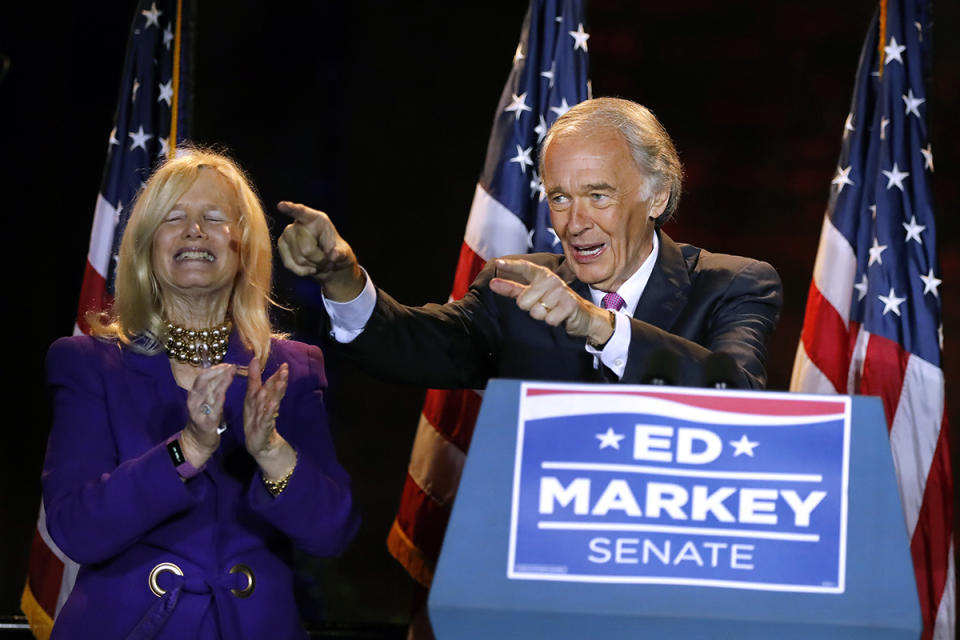
Youth organizing has always centered on peer-to-peer outreach. But now, political candidates are more fully entering the digital-first world Gen Z was already living in. The Trump campaign continued knocking on doors, but it also flooded social media platforms with digital ads. The Biden campaign launched yard signs for Animal Crossing: New Horizons players, partnered with celebrity video-sharing platform Cameo, and released new lenses on Snapchat — a platform that has a base of mainly older Gen Zers and has helped more than 1 million users register to vote. Sen. Ed Markey won his Massachusetts primary in part because of the “Markeyverse,” an organic and online community that included stan accounts on Twitter and TikTok. And Rep. Alexandria Ocasio-Cortez is well known for her Instagram Lives and AMAs.
Some things work, some things don’t, said Sami Banat, a freshman at Macalester College in Minnesota and an organizer with Rock the Vote.
The experimentation is promising, though.
“The way campaigns have organized over the last few decades, like door-knocking and talking to people who are already registered, that explains why young people are not turning out,” Banat said. “It’s felt like digital organization has been a side hustle — campaigns do it because they have to. They weren’t hiring people who know how to really innovate.”
Sebastian, the Biden campaign staffer, said the campaign holds space for feedback, pointing to progressive phone banks and “friend banks” that bring in speakers like Markey to talk about harnessing youth momentum.
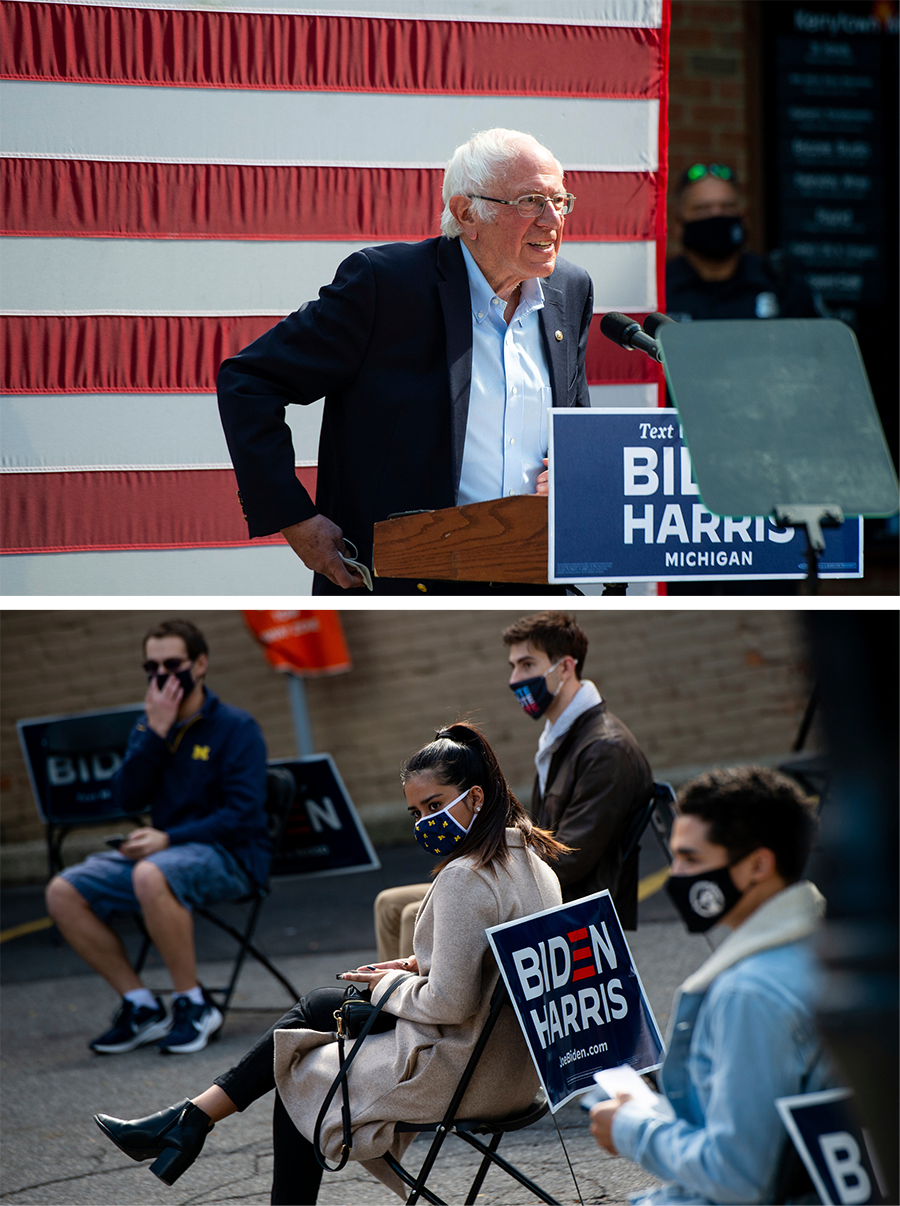
But meeting Gen Z where they’re at is also about policy.
The former vice president has worked with the youth-led Sunrise Movement and brought in Sanders onto a joint policy task force, which earned significant goodwill. Biden’s latest climate platform calls for ideas like a $2 trillion investment in clean energy and rejoining the international Paris climate accord.
“We hear a lot of young people saying that, like they want to hear about the issues,” Sebastian said. “So we're trying to make sure that when we're doing relational organizing or doing social media content or digital outreach, that we're incorporating policy as much as possible. Because it's policy to be very proud of.”
Some progressive youth advocates brought up issues they feel the Biden campaign has left off the table, like Medicare for All and — with racial justice in the immediate spotlight — defunding the police. According to the POLITICO/Morning Consult poll, 44 percent of Gen Z respondents support defunding the police, while only 29 percent of all registered voters do. More than half of Gen Z respondents say communities should reallocate funding from police departments to support other social programs.
“Engagement goes beyond just the voting,” said Dakota Hall, director of Leaders Igniting Transformation (LIT), a Wisconsin nonprofit focused on youth of color. “Young people are looking like, ‘Yo, are you on our side, or are you not?’ Politicians are not stepping up to this moment. We're seeing people like NBA players be like our civic leaders, even though that's not their job.”
Nonetheless, the former vice president’s standing with Gen Z likely voters has improved over the months. The bulk of his strength is with women and people of color. A late August/early September Harvard Youth Poll found that Biden’s support among likely voters ages 18 to 29 is 60 percent, which is greater than Hillary Clinton’s in 2016 (49 percent) or Barack Obama’s in 2008, which reached 59 percent.
Advocates who have called for more campaign investment in reaching younger voters say they've seen some movement on that front, too. An Alliance for Youth Action/Civiqs poll of young Democrats and Democratic-leaning independents — also registered voters in battleground states — had concerning numbers for liberals: 40 percent of respondents said they saw no contact from the Biden campaign in July and August. But they did see an overwhelming number of Trump digital ads. The good news, Alliance director Sarah Audelo said, is that no-contact reports have since dropped to 32 percent — still too high a number for a demographic Biden should be targeting, but it's progress, she added.
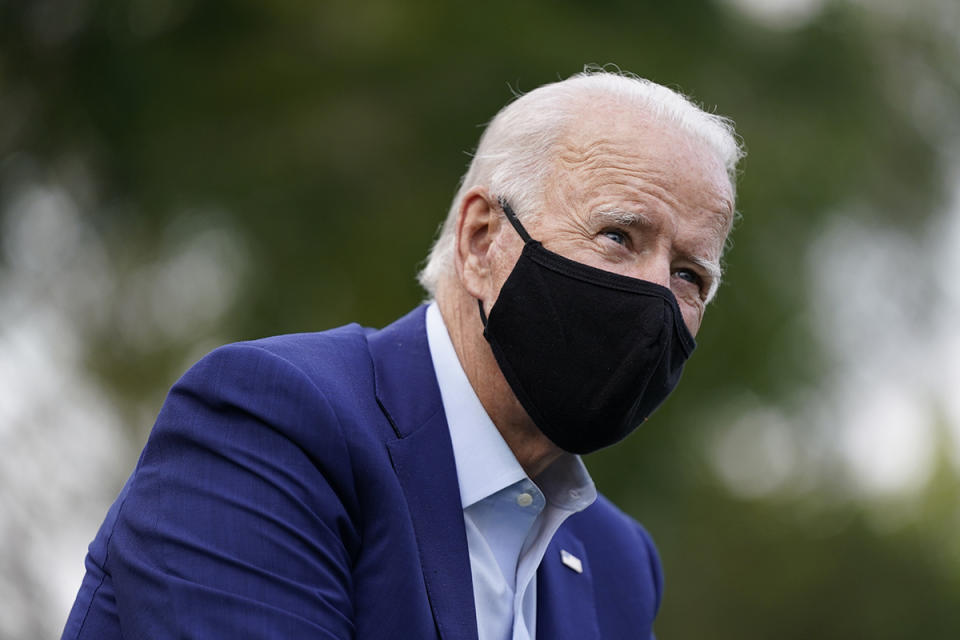
Some young progressive groups have built a coalition around Biden with the goal of beating Trump and pushing the Democrat left if he takes office. Emily Wellen, director of the nonprofit Minnesota Youth Collective, says “Settle for Biden” messaging is doing a lot of work with the people she talks to.
“You can’t tell Gen Z that Biden is something that he isn’t. That’s just like gaslighting,” she said. “But who do you want in the White House? Who can you organize?”
At least Biden is listening, said Joshua Harris-Till, the millennial president of Young Democrats of America. Harris-Till said that his organization wasn’t fully tapped as a resource in previous elections: Now, officers are on weekly calls with the campaign.
“Until you get to the point where the two-party system is dismantled, this is what we have to work with. You can be on the outside or you can be on the inside,” he said.
CLOSING THE ACCESS GAP
Organizing is as much about giving Gen Z access to voting as it is persuading them to vote.
The process before the coronavirus was already difficult, with ID laws, requirements for absentee ballots and the ability to register online varying by state. The New York Times reported that Republicans in several states began erecting roadblocks to the polls after the surge of young voters in the 2018 midterm elections.
Now, in a pandemic election, there are new rules and a new focus on vote-by-mail — unfamiliar to many young people who, frankly, don’t mail things really. The POLITICO/Morning Consult poll found that 58 percent of Gen Z respondents were “very confident” they could register to vote. That dropped to 34 percent for voting by mail and 38 percent for voting in person.
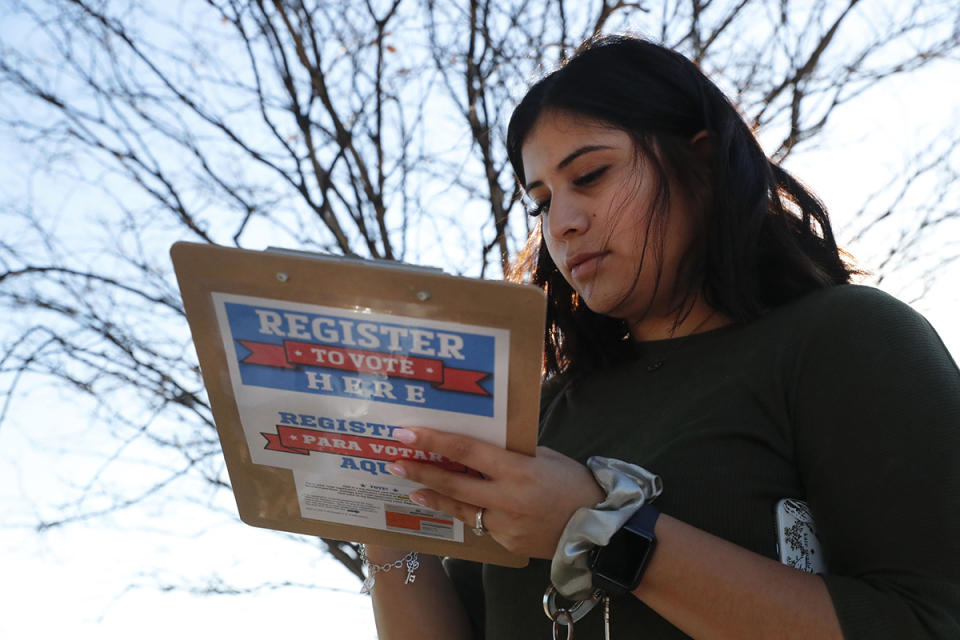
There's under a month to go. Josh Velez, an organizer with the progressive youth group NextGen America, is calling young people seven to eight times on average to make sure they’re not only committed to voting, but also registered and making a plan for Election Day. Batson, the sophomore at UT Austin, is getting question after question about vote-by-mail. Sandoval, with MOVE Texas, is trying to connect the dots between what issues people care about and what races they should be watching.
“I’m just here to affirm how you feel. To affirm that it’s OK to think all of this is hard, but I’m going to help,” Sandoval said. “We are doing something that’s difficult and made difficult on purpose.”
Abby Kiesa, director of impact at data organization CIRCLE, says the pandemic election has only exposed the cracks in youth organizing, cracks that are deeper than the “Biden vs. Trump” conversation and help explain why young people are wary of the electoral system.
Local youth groups are important, year-round political homes and the cornerstone of organizing efforts. They’re also chronically underfunded, Kiesa said. The biggest investment into youth voter turnout comes from presidential campaigns who have incentives to reach only some youth (like those who are already on voter rolls). Campaigns, juggling different demographics and aware of low youth turnout, focus their outreach on college campuses ahead of the general election. But not all young people can access higher education — important hubs for voter literacy and engagement — and few communities have figured out how to reach those outside of campuses. Experts are hopeful that the pandemic will make digital organizing an equalizer but concerned it could also leave out those without broadband access.
With all of the competing realities — of anti-Trump backlash, of a desire for change, of an enthusiasm gap, of distrust and confusion — organizers, professors and youth advocates couldn't agree on a turnout prediction. Or on how Gen Z’s political engagement would be affected beyond November.
Deckman, the Washington College political science professor, is worried what could happen if Trump wins: “Will they double down or will they be disaffected? I do worry about that, that there’s an even further feeling the system is rigged.”
But if Biden wins, it’s not the end. Harris-Till is hopeful that the party and the campaign will continue to take young people’s concerns seriously.
“They can’t just say they care about the youth vote. As a Black person, I’ve seen this for years in the community: People show up during the election season and then they forget when it’s not,” Harris-Till said. “We can’t become stagnant and pat ourselves on the back when we do one or two things right. We have to do more and more.”

